Main menu
Common skin conditions

NEWS
Join DermNet PRO
Read more
Quick links
Author: Umaima Khatoon, 5th Year Medical Student, University of Auckland, Auckland, New Zealand. Medical Editor: Dr Helen Gordon, Auckland, New Zealand. DermNet Editor in Chief: Adjunct A/Prof Amanda Oakley, Dermatologist, Hamilton, New Zealand. 2019. Revised September 2020. Copy edited by Gus Mitchell.
Introduction Demographics Causes Clinical features Complications Diagnosis Differential diagnoses Treatment Outcome
Human papillomavirus (HPV) is a small double-stranded DNA virus which has been classified into over 200 types based on genome sequencing. Each type is associated with infection at a particular anatomic site and clinical morphology.
HPV infections can be sexually transmitted or non-sexually acquired; this review focuses on the latter.
Transmission of non-sexually acquired HPV occurs when infected skin or skin squames are in direct contact with broken or macerated skin.
Non-sexually acquired human papillomavirus infection is common in:
Extensive and persistent HPV infection is seen in association with:
Cutaneous infection is mostly associated with HPV types 1, 2, 3, 4, 7, and 10, which cause common, flat, and plantar warts.
Non-sexually acquired HPV with the HPV types above can occasionally affect the skin of the anogenital region. Examples of transmission include:
HPV infection of the skin can present with a clinical lesion ie, wart. Subclinical infection or latent infection is normal-appearing HPV-infected skin. The incubation period can be as long as 12 months, as demonstrated by the eruption of viral warts a year after an organ transplant, or in early experiments injecting wart tissue to demonstrate infectivity.
The clinical manifestations of non-sexually acquired HPV are classified according to the anatomical site and lesion morphology. Warts may be solitary or multiple, and when multiple are often clustered or in lines due to autoinoculation.
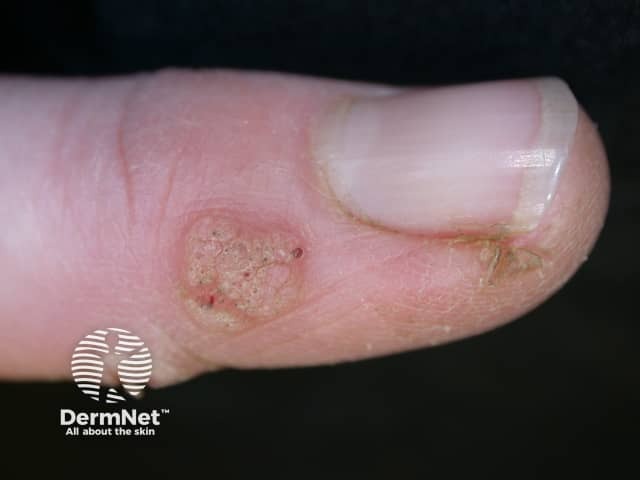
Verruca vulgaris on a thumb
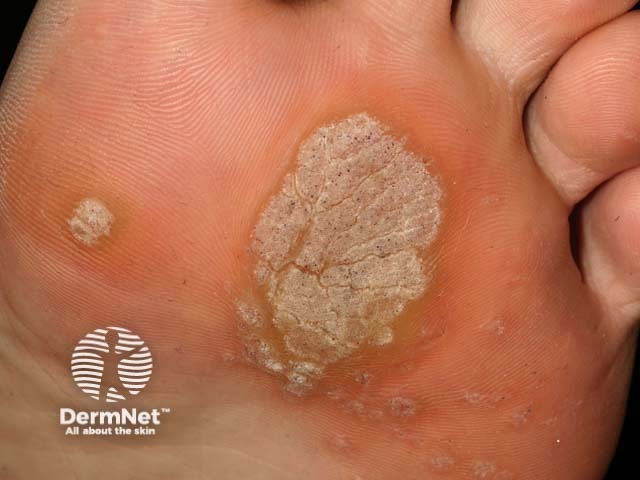
Plantar warts
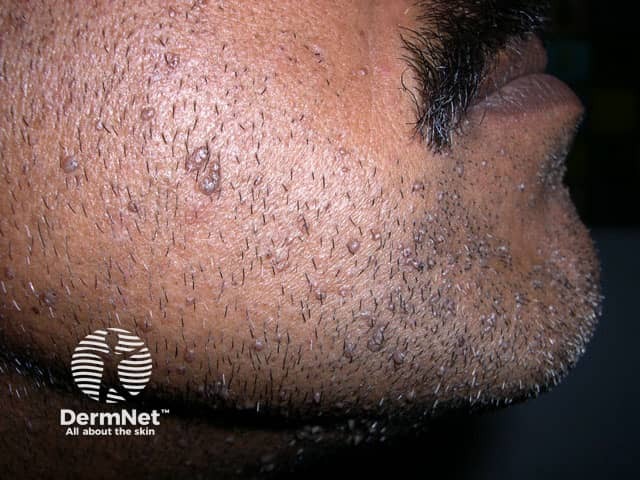
Verruca plana in the beard area spread by shaving
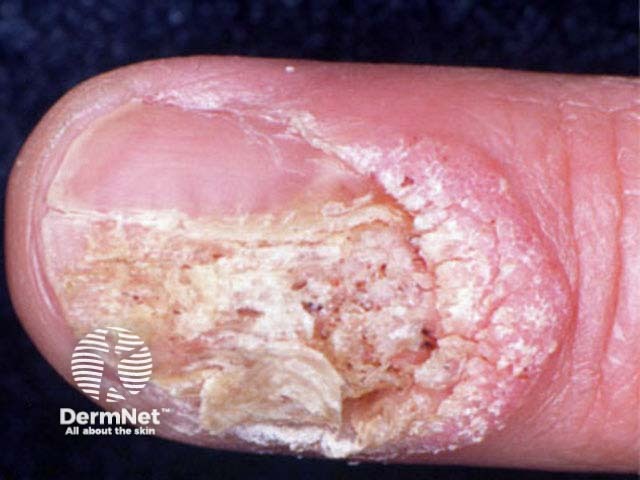
Ungual wart
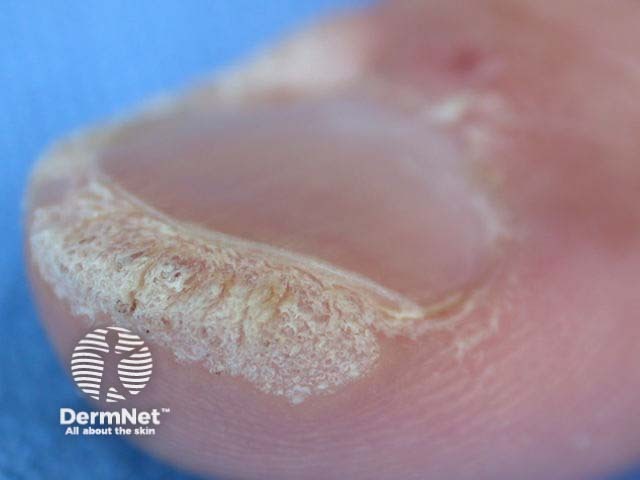
Subungual wart
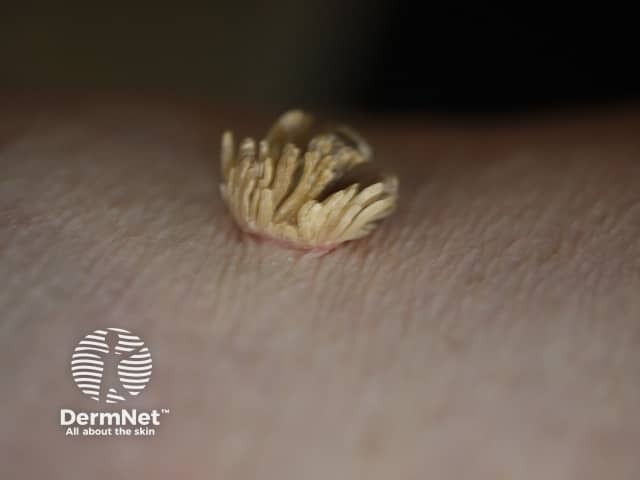
Filiform wart
Epidermodysplasia verruciformis is a rare autosomal recessive disorder with an increased susceptibility to specific HPV types, most commonly types 5 and 8. It results in the early onset of disseminated flat polymorphic lesions resembling pityriasis versicolor or plane warts.
Epidermodysplasia verruciformis carries an increased risk of HPV-related cutaneous squamous cell carcinoma (SCC). Immunosuppressed patients with HIV infection or are post-transplant may very rarely present with multiple HPV lesions resembling epidermodysplasia verruciformis.
Non-sexually acquired HPV may cause:
HPV-related warts are usually diagnosed on examination.
Non-sexually acquired human papillomavirus lesions may appear similar to:
Treatment of the cutaneous manifestations of HPV infections can be challenging. A wait and see approach can be appropriate in children who are likely to see warts resolve spontaneously.
Many treatments have been suggested for cutaneous warts, and most lack adequate clinical trials demonstrating efficacy.
First line treatments are various over-the-counter wart paints and pastes containing salicylic acid, podophyllin, and other ingredients. Higher concentrations of paints may be applied by a dermatologist.
Cryotherapy with liquid nitrogen is the most commonly used treatment by doctors. This needs to be applied multiple times at frequent intervals soon after the surface layer has peeled off and before the wart has a chance to regrow. However, to be effective, cryotherapy is painful and should induce a blister. Cryotherapy with carbon dioxide snow was mostly ineffective for warts and 'spray cans' wart treatments only achieve a similar temperature.
Other treatments used off-label include:
Treatment should include a rim of normal-looking skin where the virus has probably already spread. Horseshoe-shaped and ring-shaped recurrences around treatment sites are common.
HPV is infectious, so common-sense measures are required to minimise spread.
Cutaneous warts due to non-sexually acquired HPV resolve spontaneously in the majority of children within two years. Warts are slower to resolve in adults and may take several years. Recurrence after treatment in adjacent skin is common due to subclinical or latent infection. However, once immunity has developed to a specific HPV type, reinfection with that type is unlikely.